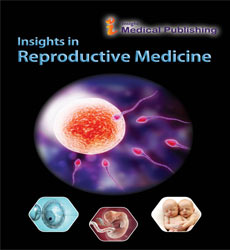The Effects of Physical, Functional and Genetic Variation
Stefan Pfister*
Department of Paediatric Oncology, Haematology and Immunology, Heidelberg University Hospital, Heidelberg, Germany
- *Corresponding Author:
- Stefan Pfister
Department of Paediatric Oncology, Haematology and Immunology, Heidelberg University Hospital, Heidelberg, Germany
E-mail: stefan-p@fister.de
Received Date: December 09, 2021; Accepted Date: December 23, 2021; Published Date: December 30, 2021
Citation: Pfister S (2021) The Effects of Physical, Functional and Genetic Variation Insights Reprod Med. Vol.5 No.3
Description
The study of genes, genetic variation, and heredity in living creatures is known as genetics. The cell, the organism (for example:dominance) and the population are all investigated in terms of gene structure and function, as well as variation and distribution. There are five different types of genetics. Molecule genetics, developmental genetics, population genetics, quantitative genetics, and morphological genetics are just a few of the genetics fields being investigated. They are the physical and functional units of heredity. Human genes can be anywhere from a few hundred and over two million DNA bases long. Humans are thought to have 20,000 to 25,000 genes, according to the Human Genome Project. Each gene is duplicated in every person, one from each parent. According to the Human Genome Project (HGP), people have between 20,000 and 25,000 genes. Each gene has two copies, one from each parent, and each individual is born with two copies of each gene. An allele is a gene variant that has two or more variants. An individual inherits two alleles from each parent for each gene. The individual is heterozygous if the alleles are different. Individuals, couples, and families with genetic issues, such as a family history of cancer, a family history of diseases that can be passed down through generations, such as cancer, heart disease, Alzheimer's disease and Parkinson's disease, can benefit from genetics.
Genetic testing that does not allow you to take action to reduce or improve your risk of a specific disease is of little use. To put it another way, genetic testing could be beneficial. Only in your case do the benefits of genetic testing outweigh the drawbacks. There are six genetic alterations to consider. Natural selection and evaluation, model organisms, medicine, research methodologies, DNA sequencing, and genomics are all topics covered in this course. In DNA replication, mistakes in the polymerization of the second strand occur on occasion. Mutations are the result of these errors, and they can impact an organism's phenotype, especially if they occur inside a gene's protein coding sequence. Mutations change an organism's genotype, which can result in the appearance of distinct phenotypes.
The majority of mutations have no impact on the phenotype, health or reproductive fitness of an organism. The majority of mutations that have an effect are harmful, although some are rarely helpful. According to studies in the drosophila fly, around 70% of mutations that affect a protein generated by a gene are harmful, with the remaining 30% neutral or weakly beneficial. Some organisms become attractive genetics research tools due to their quick generation times and ease of genetic modification. The gut bacterium Escherichia coli the plant Arabidopsis thaliana, baker's yeast (Saccharomyces cerevisiae), the worm Caenorhabditis elegance, the common fruit fly (Drosophila melanogaster), and the common house mouse are all widely used model organisms. Using ligation enzymes, DNA fragments can be joined together. Researchers can synthesise recombinant DNA, which is commonly associated with genetically engineered animals, by ligating pieces of DNA from several sources together.
In most cases, recombinant DNA is used in the context of plasmids, which are short circular DNA molecules having a few genes on them. Researchers can increase DNA fragments by putting plasmids into bacteria and cultivating them on agar plates, a method known as molecular cloning. One of the most fundamental technologies used to review genetics is DNA sequencing, which allows researchers to determine the sequence of nucleotides in DNA fragments. Chain-termination sequencing, invented by a team led by Sanger in 1977, is still widely used to sequence DNA fragments. Researchers have been able to investigate the molecular sequences associated with several human disorders using this technology.
Open Access Journals
- Aquaculture & Veterinary Science
- Chemistry & Chemical Sciences
- Clinical Sciences
- Engineering
- General Science
- Genetics & Molecular Biology
- Health Care & Nursing
- Immunology & Microbiology
- Materials Science
- Mathematics & Physics
- Medical Sciences
- Neurology & Psychiatry
- Oncology & Cancer Science
- Pharmaceutical Sciences
